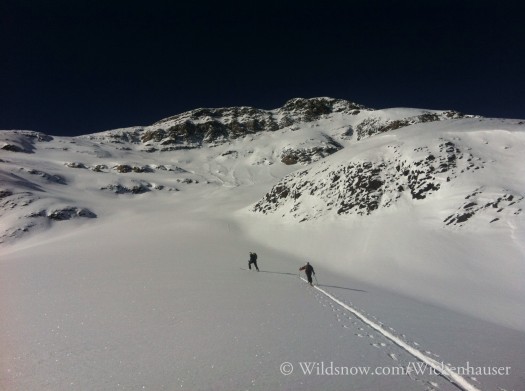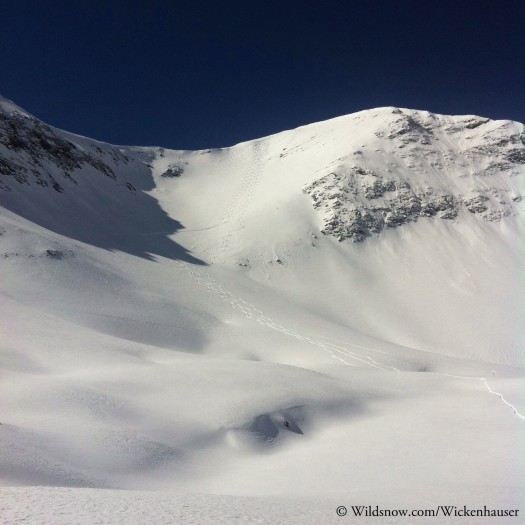We study them like lab rats until they divulge their secrets for gear, nutrition, training and recovery. How do the elite men and women go beyond the norm?
One such man-rat is Bryan Wickenhauser, 2x Grand Traverse winner, 3x US Ski Mountaineering Team member, 2x Power of Four winner, 2009 Five Peaks Team winner, plus a familiar face at nearly every skimo race here in Colorado. Simply stated “Wick” is no stranger to overcoming the pain cave torturefest.
To ease my suffering when I start ski touring this season, I sought him out for training advice.
In addition to training for his own skimo races with Team Crested Butte, Wick instructs ski conditioning at Colorado Western State University in Gunnison, Colorado. His workouts focus on aerobic and plyometric conditioning to get the entire body in shape for the demands of ski touring.
For a backcountry skiing (endurance) athlete, the training strategy is low weight/high reps, with an emphasis on increasing the reps throughout a long term program. There can be a higher weight/low rep phase built in, but that should be worked out with the help of a professional coach or trainer.
Disclaimer: When starting a weight lifting program, it is best to ALWAYS seek guidance on proper technique. Please don’t jump into a weight lifting routine on your own based solely on what you’ve learned in this article.
_______________________________________________________________
-The following backcountry skiing specific workouts are all done in a circuit.
There are a total of nine exercises.
-
Double Poling
Kick ‘n’ Glide
Quad Resistance
Classic Box Jump With Poles
Rope Poling
Weighted Core Twist
Crunches
Bench Press
Squats
It takes 35 minutes of lifting to complete three circuits of nine exercises per circuit (not much pause between any given exercise within a circuit; one to two minutes of rest between circuits). This does not include any warm up/cool down time.
Progressions can incorporate increasing the number of reps and number of circuits.
If exercises become too difficult, lower the weight or number of circuits. You are encouraged, for a number of reasons, to work out with a partner when using a weight lifting routine (similar to skiing in the backcountry).
Upper Body Double Poling
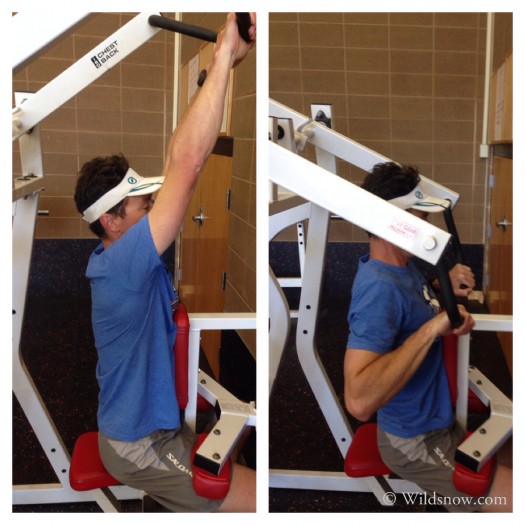
Mimic the double poling motion like when you are skating out from a ski or skiing in to an approach. The movement here is overextended but works the entire poling motion.
Kick ‘n’ Glide
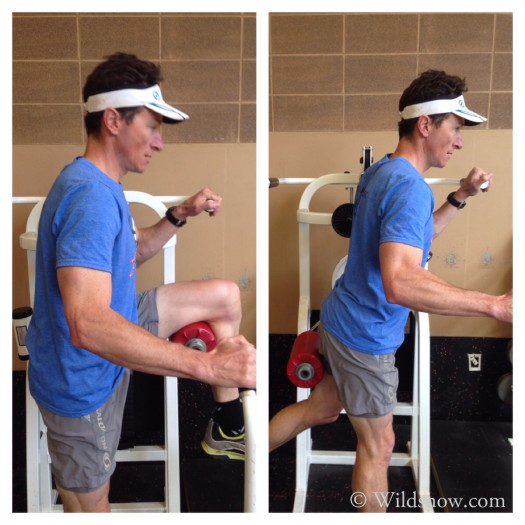
Movement here builds strength in the kick and glide phase of ski touring, developing strong hip flexors.
Quad Resistance
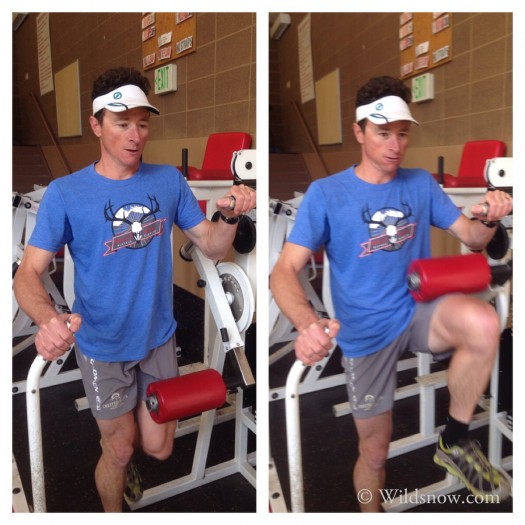
Here's the same machine just utilizing resistance against the quad, simulating uphill ski touring motion. Strong focus is again on the hip flexor.
Classic Box Jump With Poles
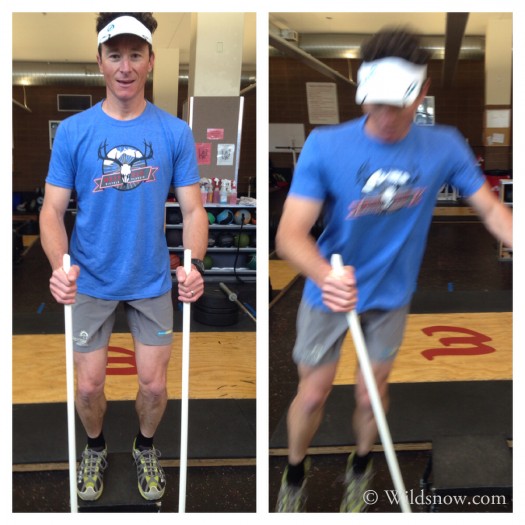
Classic box jump with feet hips width apart. Using PVC poles keeps the hands quiet and steady while performing the exercise. Ski specific as possible.
Rope Poling
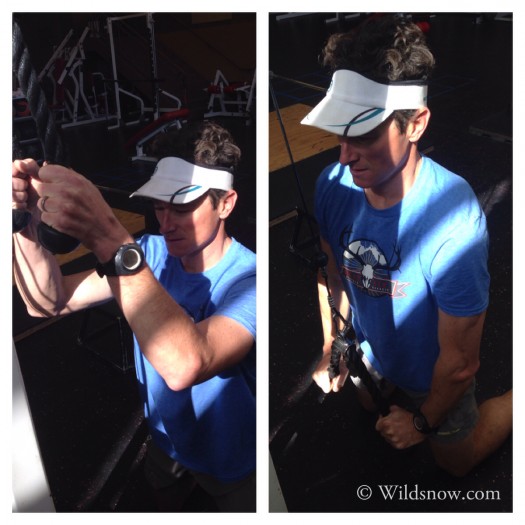
Ski specific poling action exercise with a rope. Over emphasize the movement. It is done to help with your poling action in real ski situations where you might be skating on a mellow approach or skating back to the car on a snowmobile road. Exercise is performed on your knees to elongate the poling movement on this machine and completing the exercise with fictional poles on the follow through.
Weighted Core Twist
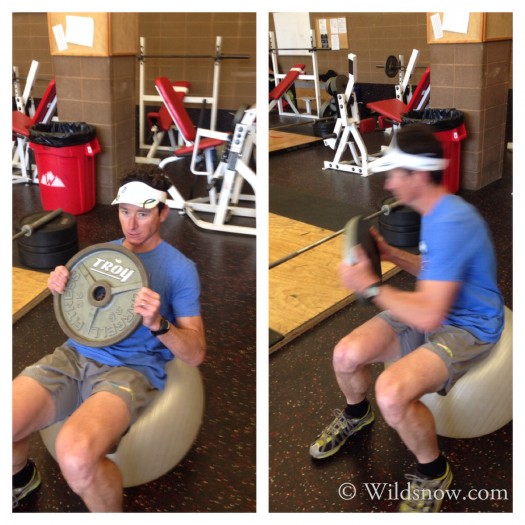
Stability ball with 25 to 35 lbs plate weight twisting motion. Equal reps on each side and focus on the twisting movement while keeping feet planted.
The final three exercises in the circuit are:
Crunches
Bench Press
Squats
With the focus on more reps, less weight versus channeling your inner Schwarzenegger.
A weight lifting routine should always be supplemented with a warm up phase for 10+ minutes of cardio on a treadmill, stationary bike, etc. A cool down phase (10-30 minutes of cardio) can help relieve post lifting tightness. If you can’t do the cool down phase immediately after lifting, get out that day for stretching or cardio.
Use a weight lifting circuit twice a week, i.e.: Monday/Wednesday or Tuesday/Thursday, build in plyometrics/cardio routines on the alternate days of the week, and start skiing AS SOON AS POSSIBLE IN THE SEASON!!!!!
Joseph Risi was raised on pasta and meatballs in the “backwoods” of Long Island before seeking higher education in the mountains of Vermont. Always looking for adventure, building treehouses, working too many odd jobs around the world he now lives in the Aspen area of Colorado.

